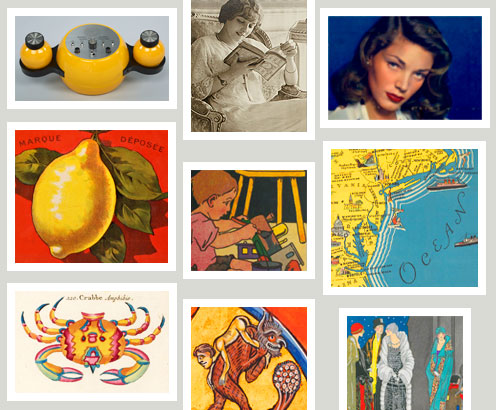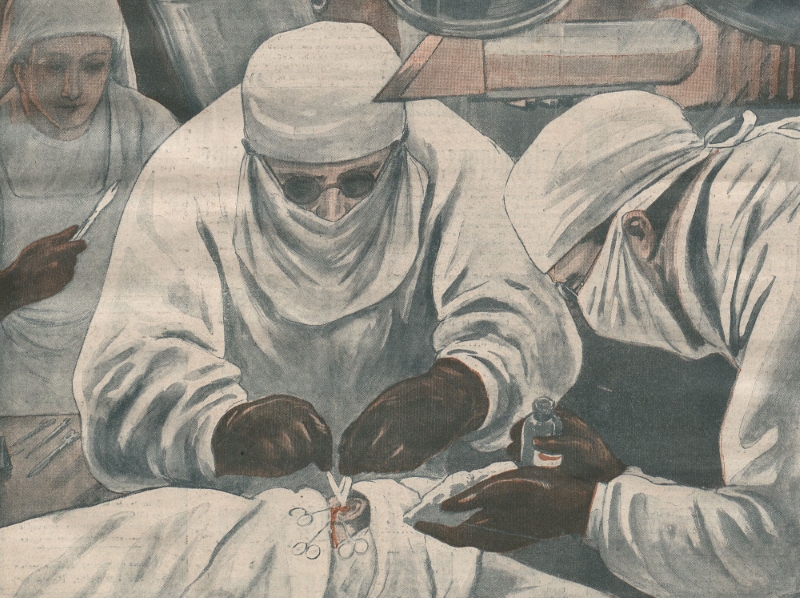The pioneers of transplantation at the beginning of the 20th Century
In 1909, the writer Maurice Renard published his manifesto on the merveilleux-scientifique literary movement. The theme of transplantation enabled the authors of the genre to examine the idea of hybridization, and the loss of humanity or personality that this intervention resulted in. In these stories, no technical obstacle got in the way of organ transplantation, be it concerning hands or the brain.
In reality, it wasn’t until the 1950s that long-lasting whole organ transplantation was mastered in humans. Some operations such as head or brain transplants remain pure fantasy. But what was the state of knowledge on transplants in the first decades of the 20th Century, at the time when merveilleux-scientifique literature thrived?
First let us recall that, in medicine, transplantation consists of the removal and implantation of a whole organ (heart, lung, kidney…). A graft, on the other hand, involves partial implantation (skin, cornea). The term allograft is used for organ transplantation between two individuals of a same species, and the term xenograft for that between individuals of two different species.
Prior to the 20th Century, graft attempts were made, but they often failed. In the 16th Century, Gaspare Tagliacozzi was successful with autografts (grafts where the donor and recipient are the same person) of the nose, but failed with allografts. In 1869, Jacques-Louis Reverdin succeeded in performing the first skin graft. The nineteenth century saw the development of graft experiments on animals which lead to the first successful autograft of the kidney of a dog to its own neck in 1902. The kidney graft is very popular: its removal is easy (the remaining kidney being enough to ensure survival), and its excretory function enables the appreciation of the proper functioning of the graft. We will see that the first attempts of transplantation in man also involved kidneys, implanted on the elbow or on a thigh.
The beginning of the 20th Century was an intense period of experimentation, applying ethics that appear rather questionable nowadays. The research benefitted from the progress of past centuries in the areas of anesthesia, antisepsis and asepsis. But the implantation of an organ also requires the mastery of vascular suturing to stitch the vessels and ensure the blood flow to the graft, which no surgeon knew how to do at the end of the 19th Century.
In this area of research, the publications of the Lyonese School, led by Mathieu Jaboulay and Alexis Carrel, were decisive. From 1896 to 1898, Mathieu Jaboulay researched sutures and arterial grafts. Alexis Carrel developed a more efficient technique to suture end to end with support threads by triangulation. He detailed his method in an article published in 1902. He was awarded the Nobel Prize for Medicine in 1912 for his work on vessel suture and organ transplantation. Although nowadays Carrel is sadly more associated with his theories on humankind, his research at the beginning of the 20th century did contribute to the development of vascular surgery and the technique of triangulation as we know it today.
We only know that the method that I have just described allows in a rather simple fashion to perform the difficult anastomosis that is required by organ transplantation.
The reactions of the medical community were mixed: some colleagues used his methods, but others began to strongly criticize his lack of ethics and the questionable results he obtained. Nowadays the success of such grafts sounds biologically unbelievable, but the practice was of its time. The role of hormones was discovered, as well as the use of organ extracts (called opotherapy] was common. In different editions of the Vidal Dictionary at the time, a dictionary which references marketed medicines in France, a number of opotherapeutic preparations which contained extracts of the thyroid gland, cerebral substance or a young cow’s ovaries were listed.
It is once more question of the violation of personality in Maurice Renard’s Les mains d'Orlac [The hands of Orlac] which appeared in installments in L'Intransigeant between May 15th and July 12th 1920. In this story, a pianist who was victim of a train accident, Stephen Orlac, was the recipient of the transplant of the hands of a criminal, and he believed he was inhabited by the spirit of the assassin. Maurice Renard also wrote about the theme of artificial organ transplants in L'homme truqué [The modified man], published in 1921 in the magazine Je sais tout. Here, the protagonist Jean Lebris, who lost his eyesight during the Great War, is implanted with electroscopes in place of his eyes, which enabled him to see electricity. A repaired, transformed, altered, augmented man...One century later, these themes broached in the merveilleux-scientifique stories are still current in literature.
Pour aller plus loin
Le merveilleux-scientifique. Une science-fiction à la française was a free exhibition that could be visited on the François-Mitterrand site of the national library from the 23rd of April to the 25th August 2019 during the opening hours of the library.
Read the series of blog posts dedicated to the " Merveilleux scientifique Cycle" in the Gallica Blog.
To read merveilleux-scientifique stories in the digitized collections of Gallica, here is a treasure map, in the form of an online bibliography .
To enjoy the visual and iconographic wealth of the movement, check out this Instagram account.








Ajouter un commentaire